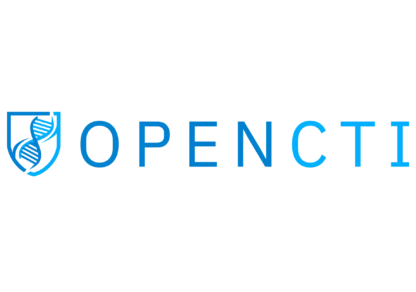OpenCTI
OpenCTI is an open source platform allowing organizations to manage their cyber threat intelligence knowledge and observables. It has been created in order to structure, store, organize and visualize technical and non-technical information about cyber threats.
The structuration of the data is performed using a knowledge schema based on the STIX2 standards. It has been designed as a modern web application including a GraphQL API and an UX oriented frontend. Also, OpenCTI can be integrated with other tools and applications such as MISP, TheHive, MITRE ATT&CK, etc.


Connecting Threat Investigation and Threat Intelligence
The connector between OpenCTI and Defants vSIRT streamlines threat intelligence management, providing centralized access to rich contextual information about threats.
This integration enhances decision-making and enables organizations to respond more effectively to security incidents by automating the exchange of threat intelligence data. Overall, it improves threat visibility, decision-making, and operational efficiency in cybersecurity operations.
Integrations with Defants vSIRT
Enhanced Threat Detection
By incorporating cyber threat intelligence feeds, the platform can identify known malicious indicators more effectively, enabling quicker detection of potential threats.
Contextual Understanding
Cyber threat intelligence provides valuable context about threats, including tactics and procedures used by threat actors, enhancing analysts' understanding of detected threats.
Proactive Defense
Access to up-to-date threat intelligence enables organizations to proactively defend against emerging threats, strengthening overall cybersecurity posture and reducing the likelihood of successful breaches.
Prioritization of Alerts
Cyber threat intelligence helps prioritize security alerts based on threat risk levels, allowing security teams to focus efforts on addressing critical threats first, thereby improving operational efficiency.

Comprehensive Data Capitalization : Users can capture both technical and non-technical information, linking each piece to its primary source. This includes TTPs, observables, suggested attribution, victimology, etc., with features like links between information, first and last seen dates, and levels of confidence.
Integration with MITRE ATT&CK Framework : OpenCTI can utilize the MITRE ATT&CK framework to structure data, providing users with a standardized approach to understanding and representing information.
Inference of New Relations : Analysts can infer new relationships from existing ones within OpenCTI, facilitating the extraction and leveraging of meaningful knowledge from raw data.

Data Import and Export: The platform supports both import and export of data in various formats such as CSV and STIX2 bundles. Connectors are also available to facilitate interactions with other platforms.
Editions: OpenCTI offers both Community (CE) and Enterprise (EE) editions. The Enterprise Edition provides additional features through investments in research and development, offering users enhanced capabilities for threat intelligence management.
Overall, OpenCTI empowers users with robust capabilities for collecting, analyzing, and sharing threat intelligence data, helping organizations improve their cybersecurity posture.
About OpenCTI
OpenCTI, short for Open Cyber Threat Intelligence, is an open-source platform designed for managing and sharing cyber threat intelligence data. It allows organizations to collect, analyze, and visualize information related to cybersecurity threats, such as indicators of compromise (IOCs), tactics, techniques, and procedures (TTPs), threat actor profiles, and more.
The platform enables users to centralize their threat intelligence data, providing a comprehensive view of cyber threats and facilitating collaboration among security teams and organizations. OpenCTI supports the integration of various data sources, including reports, threat feeds, and internal data sources, and allows users to correlate and analyze this information to identify patterns and trends.